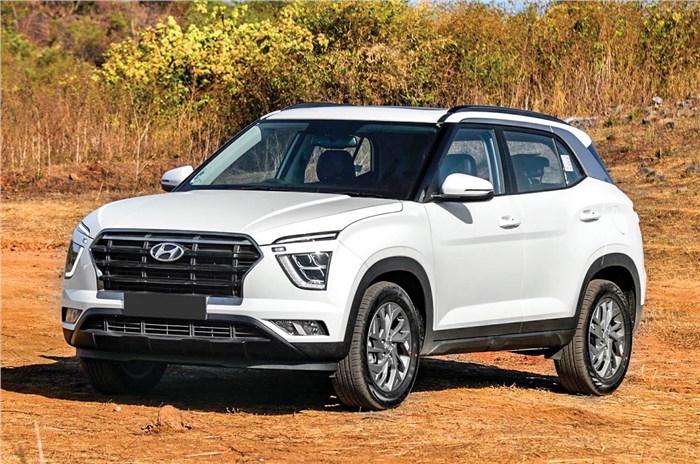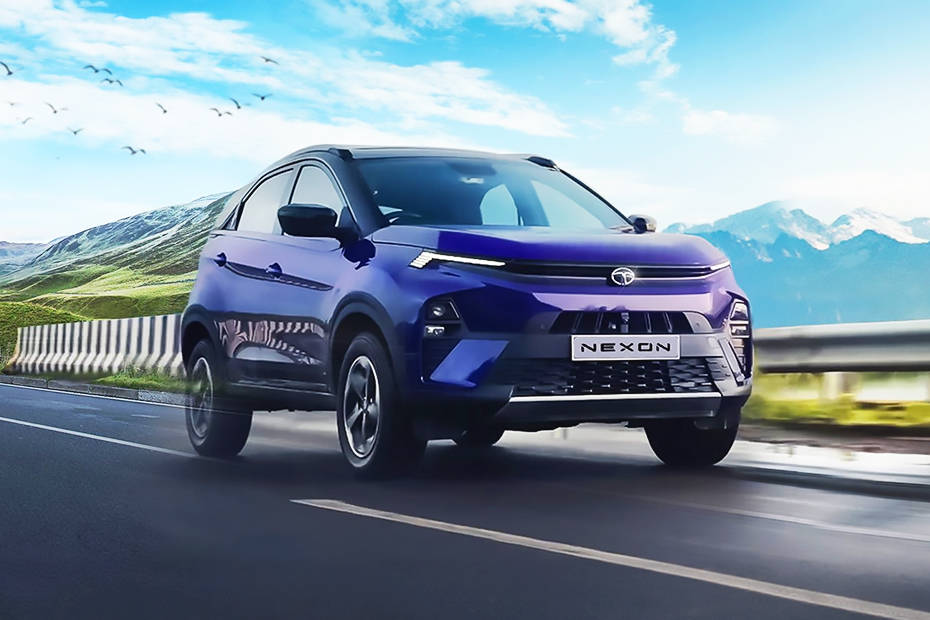Introduction
The automotive landscape in India is ever-evolving, and the sales data from October 2023 provides a rich tapestry of insights into consumer preferences, market trends, and the competitive dynamics among leading car manufacturers. In this extended analysis, we’ll delve even further into the performance of specific models, emerging trends, and the potential implications for the future of the Indian automobile industry.
Top Performers
- Maruti Wagon R (22,080 units): Securing the top position, the Maruti Wagon R showcased robust sales, totaling 22,080 units and registering an impressive 23% year-on-year (YoY) growth. The enduring popularity of this model highlights Maruti Suzuki’s stronghold in the market and the consistent appeal of the Wagon R among Indian consumers.
- Maruti Swift (20,598 units): The Maruti Swift maintained its stronghold in the market, claiming the second position with 20,598 units sold. The model recorded a substantial 20% YoY growth, signaling its continued popularity. The anticipation surrounding the upcoming generation model further fueled Swift’s allure.
- Tata Nexon (16,887 units): The Tata Nexon secured the third spot with 16,887 units sold, marking a commendable 23% YoY growth. The recent facelift, coupled with feature enhancements, contributed to the Nexon’s increased market share. The model’s performance underscores Tata’s competitiveness in the compact SUV segment.
- Maruti Baleno (16,594 units): Despite experiencing a marginal 3% YoY decline in sales, Maruti Baleno remained a significant player with 16,594 units sold. The dip in sales could be attributed to factors such as increased competition in the premium hatchback segment. However, Maruti’s overall dominance in the market remains intact.
- Maruti Brezza (16,050 units): The Maruti Brezza exhibited stellar performance, recording a remarkable 61% YoY growth with 16,050 units sold. This surge in sales underscores the demand for compact SUVs in the Indian market and reaffirms Maruti’s ability to cater to diverse consumer preferences.
- Tata Punch (15,317 units): Tata’s Punch, a recent entrant in the compact SUV segment, showcased a robust performance with 15,317 units sold, marking a substantial 39% YoY growth. This indicates the success of Tata’s strategic foray into the burgeoning SUV market, capturing the attention of Indian consumers.
- Maruti Dzire (14,699 units): Maruti’s Dzire, India’s highest-selling sedan, continued its strong run with 14,699 units sold, reflecting a 19% YoY growth. The sedan segment, often deemed as mature, maintains its relevance, showcasing the enduring appeal of compact sedans among Indian car buyers.
- Maruti Ertiga (14,209 units): Maruti’s Ertiga, a popular choice in the MPV segment, recorded 14,209 units in sales, translating to a substantial 35% YoY growth. The Ertiga’s success is indicative of the growing preference for versatile and spacious family-oriented vehicles in the Indian market.
- Mahindra Scorpio N + Classic (13,578 units): Mahindra’s Scorpio N + Classic duo saw a phenomenal 83% YoY growth with 13,578 units sold. This success can be attributed to Mahindra’s focused approach to offering robust and adventure-ready SUVs, resonating well with the evolving needs of Indian consumers.
- Hyundai Creta (13,077 units): The Hyundai Creta, a stalwart in the compact SUV segment, maintained its steady performance with 13,077 units sold, reflecting a 10% YoY growth. Hyundai’s commitment to design, features, and customer experience continues to pay dividends in the competitive SUV market.

Segment-wise Dynamics
- Compact SUVs continue to dominate: The presence of multiple compact SUVs in the top 25 reaffirms the growing preference for this segment among Indian consumers. Models like the Maruti Brezza, Tata Nexon, and Kia Seltos exemplify the appeal of compact SUVs with their combination of style, practicality, and versatility.
- Sedans maintain relevance: Despite the surge in SUV popularity, sedans like the Maruti Dzire continue to hold their ground. The Dzire’s consistent performance emphasizes the enduring demand for compact sedans, especially among urban consumers.
- MPVs gaining traction: The success of models like the Maruti Ertiga and Eeco suggests a growing interest in multi-purpose vehicles (MPVs) that cater to family and commercial needs. The versatility offered by MPVs makes them a popular choice among a diverse range of consumers.

Brand Strategies and Market Share
- Maruti Suzuki’s Dominance: With 10 models in the top 25, Maruti Suzuki maintains its dominance in the Indian market. The brand’s wide-ranging portfolio, coupled with a strong distribution network, contributes to its consistent performance.
- Hyundai’s Strategic Positioning: Hyundai’s five models in the top 25 underscore the brand’s strategic approach to cater to various segments. The success of models like the Creta and Venue indicates Hyundai’s ability to resonate with diverse consumer preferences.
- Tata’s Growing Presence: Tata’s three models in the top 25, especially the Nexon and Punch, reflect the brand’s growing presence and acceptance in the competitive Indian market. Tata’s focus on design, safety, and technology positions it as a key player in the industry.
- Mahindra’s SUV Prowess: Mahindra’s success with the Scorpio N + Classic, along with the Bolero and XUV700, highlights the brand’s prowess in the SUV segment. Mahindra’s diverse SUV offerings cater to a broad spectrum of consumers.
- Kia’s Niche Appeal: Kia’s presence with models like the Seltos and Sonet showcases the brand’s niche appeal, particularly in the mid-size SUV segment. Kia’s emphasis on design and advanced features contributes to its growing popularity.

Market Response to Facelifts and Upgrades
- The Impact of Nexon’s Facelift: The Tata Nexon’s impressive performance after its facelift indicates the market’s positive response to design and feature upgrades. Tata’s focus on enhancing Nexon’s aesthetics and technology has increased consumer interest.
- Swift’s Sustained Appeal: The Maruti Swift’s continued strong sales, despite an upcoming generation model, underscores its timeless appeal. Swift’s reputation for reliability, fuel efficiency, and performance makes it a preferred choice in the hatchback segment.
- Ertiga’s Family-Friendly Features: The Maruti Ertiga’s success can be attributed to its family-friendly features, spacious interiors, and fuel-efficient engine. As families seek versatile and comfortable vehicles, the Ertiga’s performance aligns with evolving consumer preferences

Conclusion
The extended analysis of the top 10 selling cars in October 2023 provides a comprehensive view of the Indian automobile industry’s dynamics. From the dominance of Maruti Suzuki to the strategic positioning of Hyundai and the growing presence of Tata and Kia, the market reflects a nuanced interplay of brand strategies, consumer preferences, and evolving trends.
As the industry navigates through challenges such as changing fuel preferences, the push for electric vehicles, and global supply chain disruptions, the October 2023 sales report serves as a critical benchmark. It not only outlines the success stories of specific models but also offers a roadmap for manufacturers to adapt and innovate in response to dynamic market forces.
The outlook for November remains optimistic, driven by the continuation of the festive season and sustained consumer demand. The interplay of competitive pricing, advanced features, and brand loyalty will likely shape the industry’s trajectory in the coming months. As we move forward, keeping a close eye on emerging trends and consumer behaviors will be essential for stakeholders looking to navigate the ever-evolving landscape of the Indian automotive market.
Frequently Asked Questions
1. What is the top-selling car in India for October 2023?
The Maruti Wagon R secured the top position with 22,080 units sold, showcasing robust sales and a 23% YoY growth.
2. How did the Maruti Swift perform in October 2023?
The Maruti Swift claimed the second position with 20,598 units sold, recording a substantial 20% YoY growth, emphasizing its continued popularity.
3. Which compact SUV model showed remarkable growth in sales?
The Maruti Brezza exhibited stellar performance with a remarkable 61% YoY growth, reflecting the demand for compact SUVs in the Indian market.
4. What factors contributed to the dip in Maruti Baleno sales?
Despite a marginal 3% YoY decline in sales, Maruti Baleno remained significant. Increased competition in the premium hatchback segment is cited as a contributing factor.
5. How did Tata’s Punch perform in the compact SUV segment?
Tata’s Punch, a recent entrant, showcased a robust performance with 15,317 units sold, marking a substantial 39% YoY growth, indicating success in the SUV market.
6. How many models does Maruti Suzuki have in the top 25?
Maruti Suzuki maintains dominance with 10 models in the top 25, highlighting the brand’s wide-ranging portfolio and strong distribution network.
7. What is Hyundai’s strategic position in the Indian market?
Hyundai has five models in the top 25, showcasing the brand’s strategic approach to cater to various segments and resonate with diverse consumer preferences.
8. Which brand emphasizes niche appeal in the mid-size SUV segment?
Kia’s presence with models like the Seltos and Sonet showcases the brand’s niche appeal, particularly in the mid-size SUV segment.
9. How did the market respond to Tata Nexon’s facelift?
The Tata Nexon’s impressive performance after its facelift indicates a positive market response to design and feature upgrades, increasing consumer interest.
10. What factors contribute to the success of Maruti Ertiga in the MPV segment?
Maruti Ertiga’s success can be attributed to its family-friendly features, spacious interiors, and fuel-efficient engine, aligning with evolving consumer preferences for versatile and comfortable vehicles.